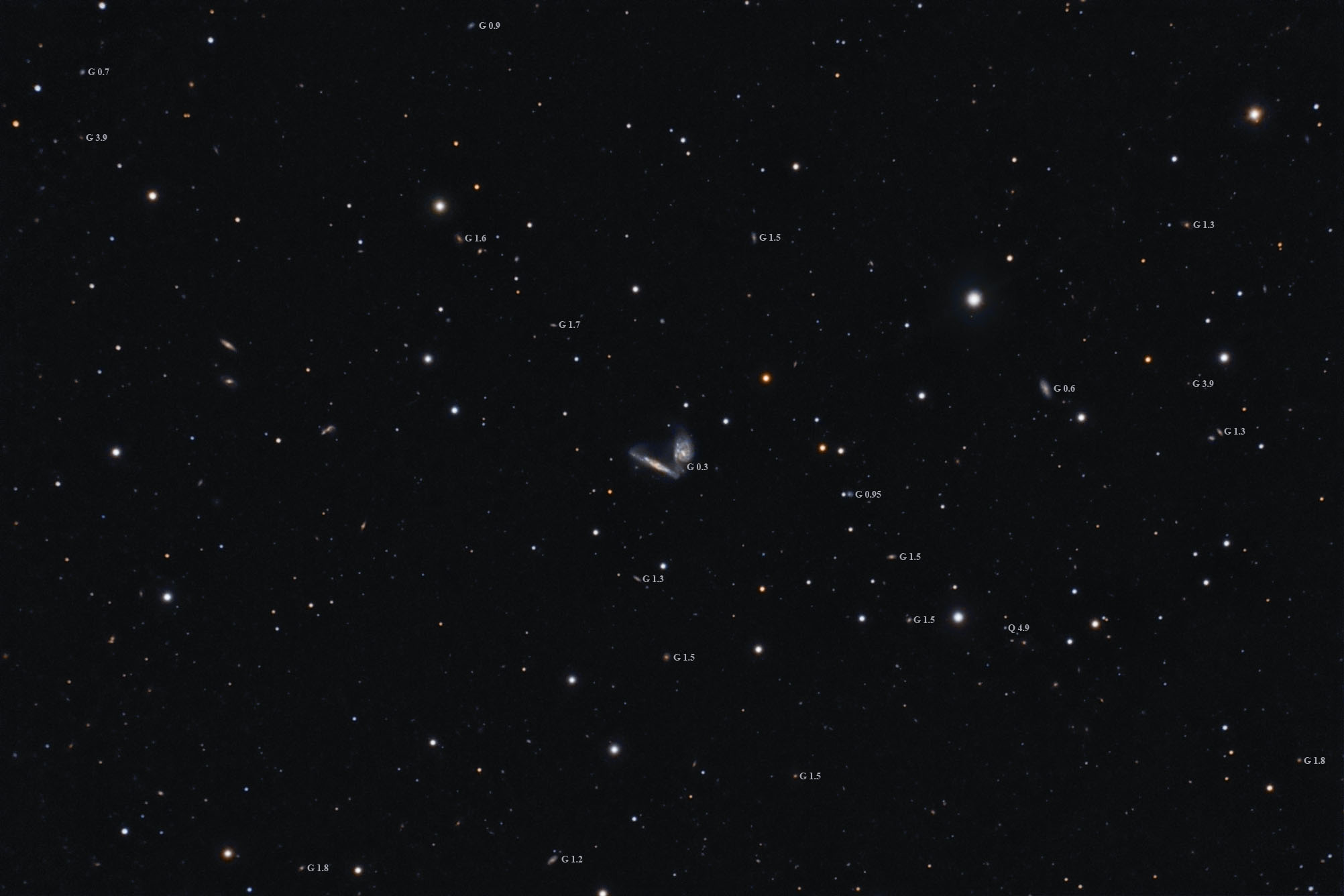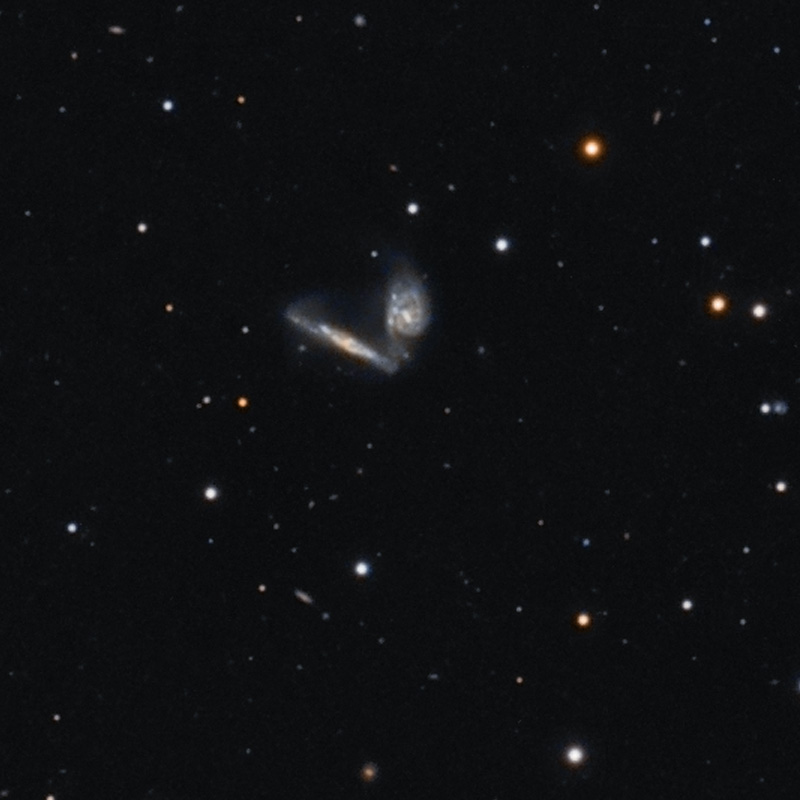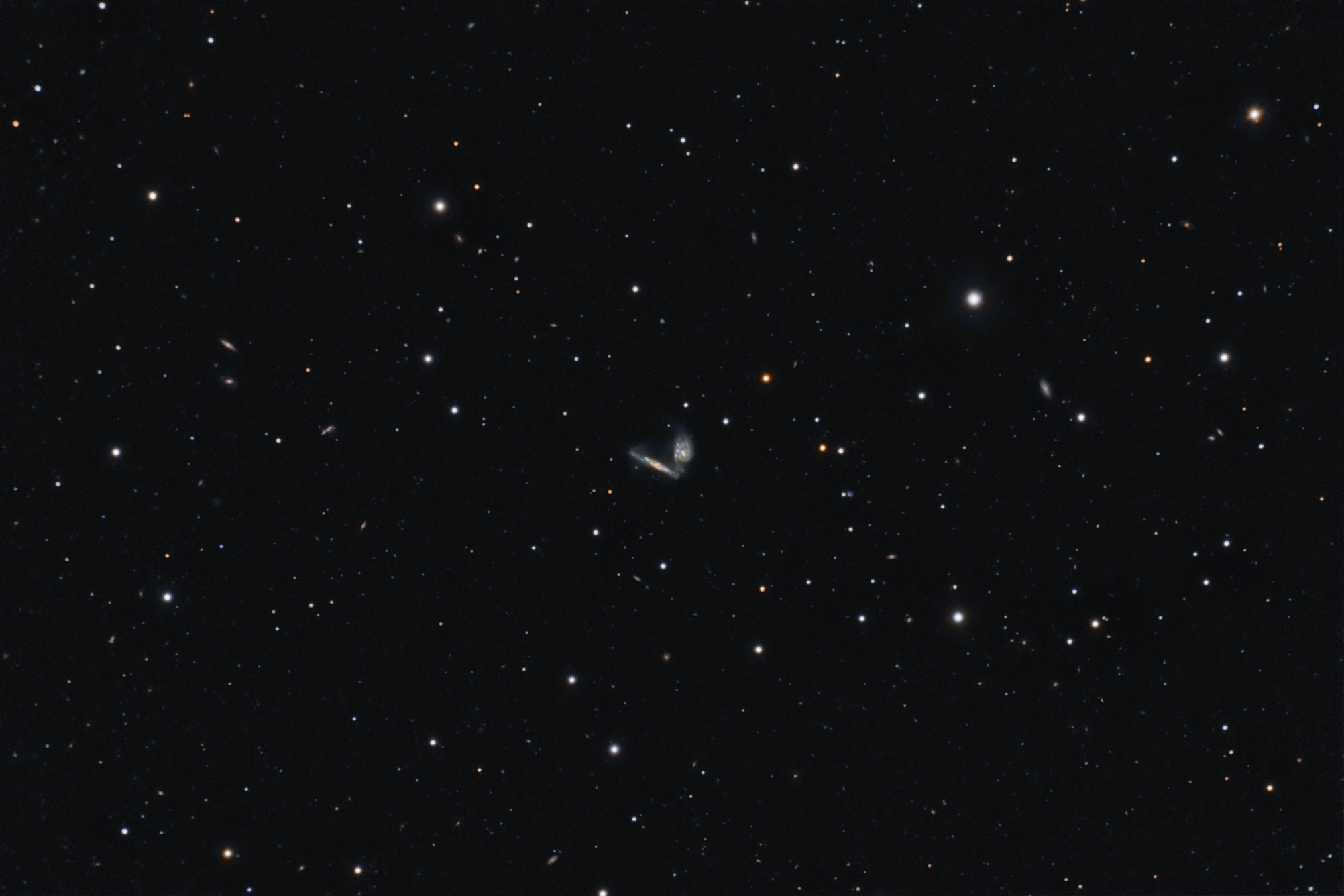Object name: ARP301Designation(s): ARP301, UGC06204, UGC06207, ARP 301 is a pair of interacting galaxies in northwestern Leo about 300 million light-years distant. The two galaxies are UGC 6204 (face on spiral) and UGC 6207 the edge on spiral. Arp put them in is Double Galaxy class. Looks like it could have gone in his Wind Effects class to me. The plume on the east end of UGC 6207 that gives it that wind blown look doesn't have that appearance in Arp's image. Arp has no comment on this pair.
UGC 6204 is classed at NED as Sb? pec. Edge on UGC 6207 is classed as Sb? pec one place and SBb another. Arp made no comment on these. UGC 6204 does have three interesting knots in the arm that have been created by the interaction. The edge on also is full of blue knots. Wish we could see it from a better angle. UGC 6204 seems to have a double core. The SDSS sees the southwest (lower right) one as the main one apparently while everything else refers to the northeast one as listed at NED.
UGC 6207 has a blue knot just east (left) of the orange disk. The Sloan survey gives it a separate designation listing it as a separate galaxy. They give it a redshift that puts the object about 6 million light-years further away than UGC 6207. I really doubt that it really is a different object, however. There is a blue, maybe fuzzy, spot at the very end of the long tidal arm of UGC 6204 right where it begins to overlap UGC 6207. It's hard to tell from my image or Arp's if it is a star or star knot in UGC 6204. The Sloan image seems to show it is a knot. It doesn't list it in any way, either as a star or part of a galaxy. I will go out on a limb and say it is a knot below my resolution.
I've prepared an annotated image but many I'd like to have distance data on, have no redshift data at NED. There's a tight pair of apparently interacting red galaxies a bit over 8 minutes east of Arp 302. The western one with the plume is 2MASX J11103049+2416187 the one east and south of it is SDSS J111031.01+241612.9 but neither have redshift data. Further east and north is a galaxy with two wide faint spiral arms. It is 2MASX J11104138+2417298. North of it is KUG 1108+245. This catalog entry indicates it is an ultraviolet emitting galaxy. It is also known as the IR source 2MASX J11104153+2418248. So it is both an IR and UV emitting galaxy. This is interesting but again little more data is available for either of these galaxies.
Arp's image:
http://ned.ipac.caltech.edu/level5/Arp/Figures/big_arp301.jpeg
14" LX200R @ f/10, L=4x10' RGB=2x10'x3, STL-11000XM, Paramount Me Related Designation(s):2MASS J11095445+2415249, 2MASX J11095147+2415419, 2MASX J11095447+2415249, 2MASXi J1109515+241542, 2MASXi J1109544+241525, 2MFGC 08701, ARP 301, ARP 301 NED01, ARP 301 NED02, ARP301, ASK 621459.0, CGCG 1107.1+2432, CGCG 1107.2+2431, CGCG 125-035, CGCG 125-036, ECO 11343, ECO 11353, HOLM 231, HOLM 231A, HOLM 231B, KPG 271, KPG 271A, KPG 271B, KUG 1107+245A, KUG 1107+245B, LDCE 0780 NED003, MCG +04-26-036, MCG +04-26-037, NSA 111742, NSA 138861, NVSS J110952+241535, PGC 033855, PGC 033862, SDSS J110951.48+241542.2, SDSS J110954.46+241524.9, UGC 06204, UGC 06207, UGC06204, UGC06207, UZC J110951.6+241543, UZC J110954.4+241525, UZC-BGP 33A, UZC-BGP 33B, VV 229, VV 229a, VV 229b, WAS 18, [RC1] A1107, [RC1] A1107A, [RC1] A1107B, [RC2] A1107+24, [RC2] A1107+24A, [RC2] A1107+24B, | | 

